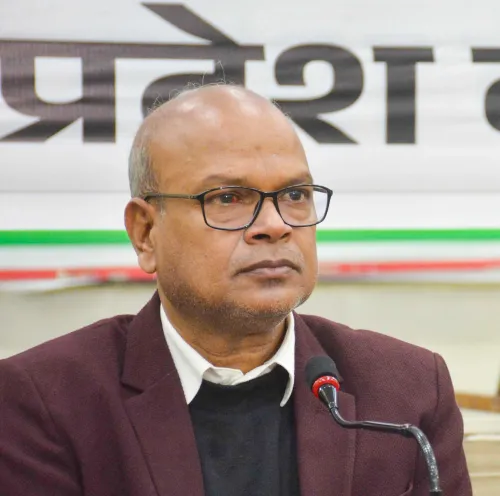Did Pakistan's Military Have Less Than a Minute to React to India's BrahMos Attack?

Synopsis
Key Takeaways
- Pakistan's military had only 30-45 seconds to assess the missile threat.
- Nuclear tensions between India and Pakistan remain high.
- Operation Sindoor inflicted heavy damage on Pakistani military assets.
- Ceasefire agreement was reached after intense military actions.
- The historical significance of Nur Khan airbase cannot be understated.
New Delhi, July 4 (NationPress) In what appears to be a tacit admission of defeat, Rana Sanaullah, an aide to Pakistan's Prime Minister Shehbaz Sharif, disclosed that the nation's military had less than a minute to assess whether a BrahMos cruise missile launched by India towards the Nur Khan airbase could potentially carry a nuclear warhead.
"When India launched the BrahMos at Nur Khan airbase, the Pakistani military had merely 30-45 seconds to determine if the incoming missile might be nuclear-capable," Sanaullah stated during an interview with a news channel in Pakistan.
"Making a decision in just 30 seconds posed a perilous dilemma," he added.
Nur Khan serves as a significant airbase for the Pakistan Air Force (PAF) located in Chaklala, Rawalpindi.
Sanaullah further emphasized that the nuclear threat loomed large during the Indo-Pakistani conflict, which escalated following a terrorist attack linked to Pakistan that claimed the lives of 26 tourists in Pahalgam, Jammu and Kashmir.
"While I’m not suggesting it was commendable that they refrained from deploying a nuclear warhead, the potential for misunderstanding could have ignited a perilous sequence leading to the first nuclear strike, which might have initiated a global nuclear confrontation," he remarked.
Following the launch of the BrahMos missile by India, Pakistan also reached out to Trump to call for a ceasefire, as the Pakistani armed forces found themselves without adequate time to respond.
India executed strikes on several Pakistani airbases during Operation Sindoor, inflicting substantial damage on runways, hangars, and infrastructure, delivering a significant blow to Pakistan.
Satellite imagery revealed extensive devastation at locations including Sargodha, Nur Khan (Chaklala), Bholari, Jacobabad, Sukkur, and Rahim Yar Khan.
This was not the first instance of an Indian strike on Nur Khan; during the 1971 war, the airbase was attacked by the 20 Squadron of the Indian Air Force (IAF) using Hawker Hunters.
Moreover, the Indian military successfully targeted multiple terrorist camps associated with groups like Lashkar-e-Taiba (LeT), Jaish-e-Mohammad (JeM), and Hizbul Mujahideen, resulting in the deaths of over 100 terrorists during Operation Sindoor.
After India's rapid operations, the Pakistani Army retaliated with drone and missile launches aimed at western India, which were effectively intercepted. India then targeted specific military sites deep within Pakistani territory.
Ultimately, the two nations reached a ceasefire agreement after four days of intense cross-border drone and missile exchanges, bringing military actions to an immediate halt.










